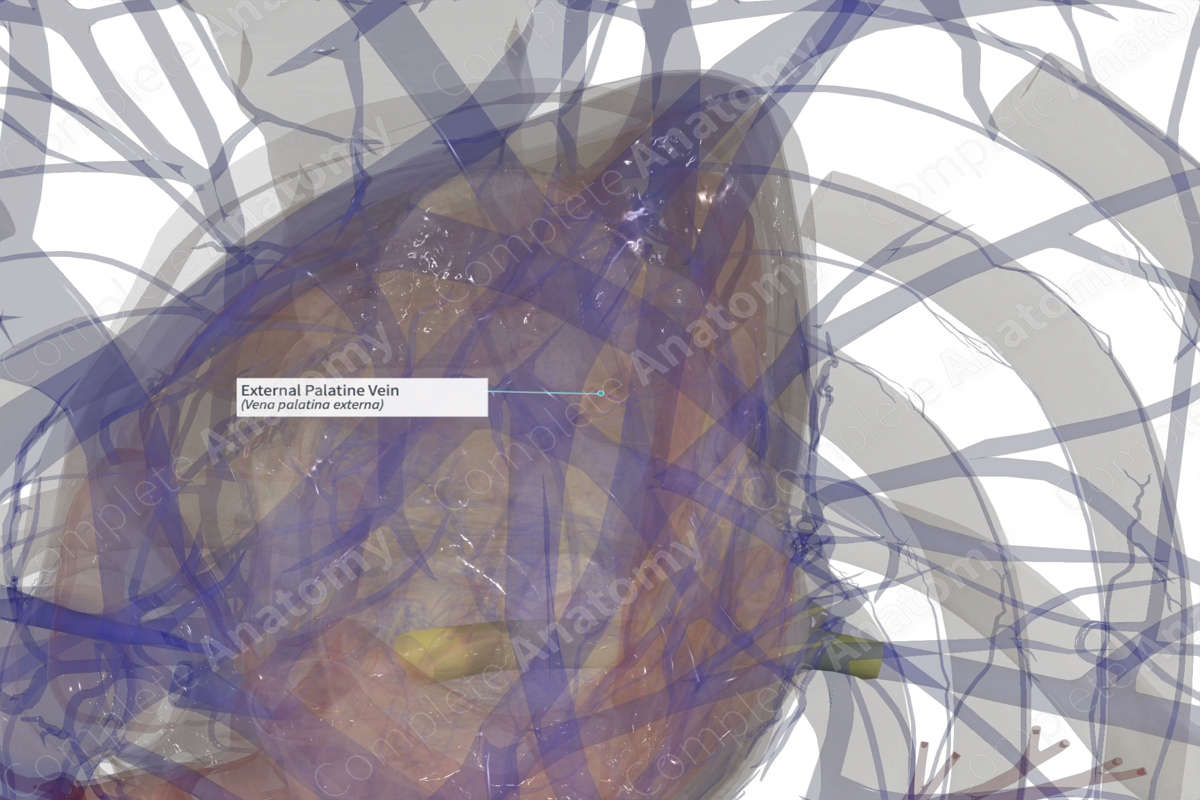
Quick Facts
Origin: Forms a paratonsillar venous plexus which covers over the fibrous capsule of the tonsil and is situated inside the paratonsillar space.
Course: Pierces the superior pharyngeal constrictor muscle to reach the pterygoid venous plexus.
Tributaries: None.
Drainage: Tonsils.
Origin
The external palatine vein arises from the paratonsillar venous plexus that lies exterior to the fibrous capsule of the tonsil, inside the paratonsillar space. The paratonsillar plexus is formed by the tonsillar veins which travel along the fibrous septa within the lobules of the tonsil to reach the fibrous capsule.
Course
The paratonsillar space is separated from the surrounding parapharyngeal space by the pharyngobasilar fascia, the superior pharyngeal constrictor muscle, and the buccopharyngeal fascia. The external palatine vein arises from the paratonsillar (pericapsular) venous plexus and pierces through the three aforementioned structures to join the pterygoid venous plexus inside the parapharyngeal space. It may also drain into the facial or internal jugular veins or the pharyngeal plexus.
Tributaries
There are no named tributaries.
Structures Drained
The external palatine vein drains the venous blood from the tonsils.
List of Clinical Correlates
- Tonsillectomy
Learn more about this topic from other Elsevier products
Vein

A venous sinus is a vein with a thin wall of endothelium that is devoid of smooth muscle to regulate its diameter.



